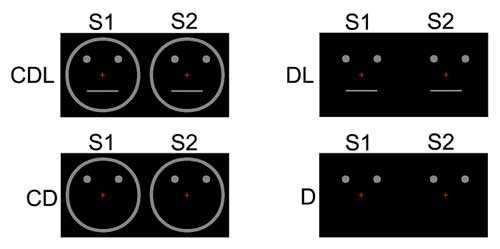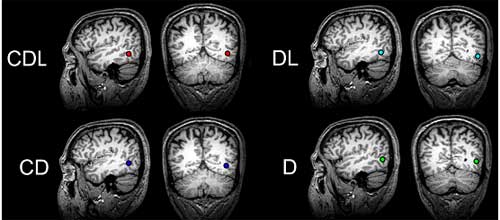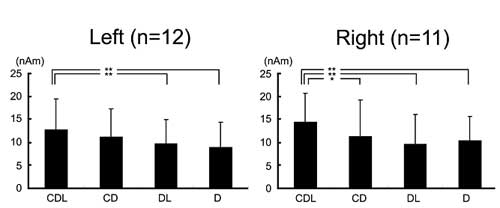Miki K, Watanabe S, Honda Y, Nakamura M, Kakigi R (2007) Effects of face contour and features on early occipitotemporal activity when viewing eye movement. NeuroImage 35(4):1624-1635
We investigated whether early activity in the occipitotemporal region, corresponding to human MT⁄V5, is influenced by a face contour and/or features such as the mouth using magnetoencephalography (MEG). We used apparent motion as visual stimuli and compared four conditions as follows: (1) CDL: A schematic face consisting of a face Contour, two Dots and a horizontal Line (2) CD: The Contour and two Dots (3) DL: Two Dots and a horizontal Line and (4) D: Two Dots only. Subjects described a simple movement of dots for D, but eye movement for CDL, DL and CD, though movement modalities were the same through all conditions. We used a single equivalent current dipole (ECD) model between 145-220ms after stimulus onset and estimated the location, dipole moment (strength) and peak latency. There were no significant differences in the peak latency of the estimated dipoles between each condition, but the activity was significantly stronger for CDL than for CD (p < 0.05), DL (p < 0.01), and D (p < 0.01) in the right hemisphere, and DL and D (p < 0.01) in the left. These results indicated that there is specific information processing for eye movements in the occipitotemporal region, the human MT⁄5 homologue, and this activity was significantly influenced by whether movements appeared with the face contour and⁄or features, in other words, whether the eyes moved or not, even if the movement itself was the same.


